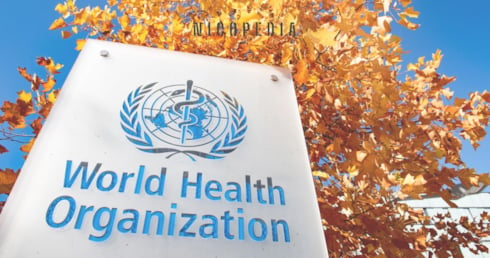WHO’s Tobacco Convention Not Effective Enough, Researchers Say
Twenty years after WHO’s Framework Convention on Tobacco Control (FCTC) came into force, a new study shows that the global decline in smoking has stalled. The study’s researchers argue that it is time to reassess the strategy and that harm reduction should play a greater role than it currently does.

Key Takeaways
- A new study evalues WHO's tobacco convention, which aimed to reduce tobacco use.
- Global smoking rates are not declining fast enough.
- The EU's target of under 5% of the population smoking seems unlikely.
- The study's authors are critical of WHO banning less harmful nicotine products.
- Their recommendations include reduced risk nicotine products having their own set of rules.
WHO’s Tobacco Reduction Measures Fall Short
The study "Two decades of global tobacco control: time for a rethink", published in Internal and Emergency Medicine, was authored by Karl Fagerström, Viktor Mravcik, Andrzej Fal, Guillermo Gervasini, Nicolas and Roberto Robles.
The authors evaluated the effectiveness of the World Health Organization (WHO)’s MPOWER policy package, which comprises six tobacco control measures to help countries reduce tobacco use.
MPOWER has been widely implemented, but only four countries have reached the highest level of implementation.
Despite this, smoking rates are not declining fast enough to meet the goal of a 30% reduction by 2025.
In Europe, progress is particularly slow, and the EU’s target of reducing smoking to below 5% by 2040 appears unattainable under current methods.
Harm Reduction Shows Results
In contrast, countries such as Sweden, Japan, and New Zealand have managed to halve smoking rates over the past decade.
Researchers largely attribute this success to consumers switching to less harmful nicotine products such as snus, e-cigarettes, and nicotine pouches.
In Sweden, snus has long been an alternative to cigarettes, and nicotine pouches have now emerged as an even less harmful option.
Clinical Relevance
For physicians in primary care and internal medicine, this should be a priority issue.
Many patients fail to quit smoking despite repeated attempts. The researchers urge doctors to offer personalised advice that includes harm reduction, and not just total nicotine abstinence.
Criticism of WHO Policy
The authors criticise WHO’s stance on banning less harmful nicotine products while cigarettes remain legal.
They argue that this is unethical and counterproductive, and that it protects the cigarette industry rather than public health.
Proposed Reforms
The article outlines five concrete steps to integrate harm reduction into the future of the FCTC (Framework Convention on Tobacco Control):
- Scientific review of harm reduction
- Improved global reporting on smoking habits and alternative products
- A separate regulatory pathway for reduced-risk products
- Policy guidelines for quality, taxation, and communication
- Clinical guidelines for counselling and treatment
Looking Forward: Now Is the Time to Shift Strategy
Without further reforms, the world risks having over 1.2 billion smokers by 2050.
Despite two decades of implementation, WHO’s Framework Convention on Tobacco Control has not outperformed countries that have taken their own path. In fact, the result is quite the opposite.
The authors argue that it is time to shift strategy: from banning nicotine to reducing the most harmful form of nicotine use — cigarette smoking.
